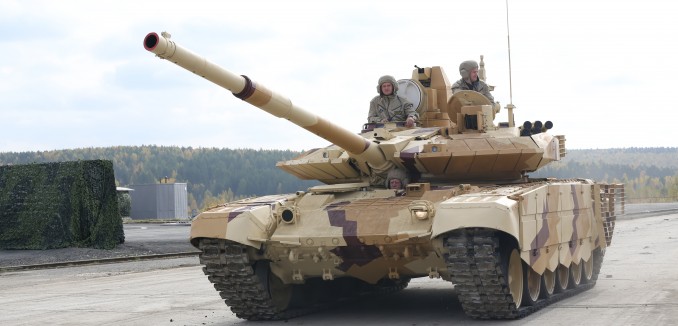Iran and Russia are currently negotiating an estimated $10 billion arms deal, which would see the Islamic Republic buy Russian tanks, artillery systems, planes, and helicopters.
Viktor Ozerov, the chairman of the defense and security committee in the upper house of the Russian Parliament, told the media on Monday while on a trip to Tehran that the deal would take place over many years. “The package of contracts that have been discussed by now and Iran’s demand are estimated at about $10 billion. It is not an amount to be provided over one year. It will take far more time,” he said.
The UN Security Council has placed a moratorium on selling offensive weapons to Iran until October 2020—unless the council grants an exception. The United States, France, the United Kingdom, or China could veto any Russian-Iranian arms deal until that date. “If the United States and Europe fail to grant permission, then we will get back to this issue in October 2020, when the formal legal aspect of this will be gone,” Ozerov explained.
Russia lifted its own sanctions on Iran in July 2015, shortly after the Islamic Republic signed the nuclear deal with global powers. It quickly made a deal to sell its sophisticated S-300 surface-to-air missile system to Iran. Russia and Iran argued that the deal did not violate the Security Council’s resolutions, since the system was purely defensive. However, U.S. officials and military analysts believe that those missiles could indeed be used in an offensive capacity.
The S-300 parts were delivered between April and October. The system should be operational by the year’s end, Ozerov said.
S-300 batteries have already been deployed to the nuclear enrichment site at Fordow, according to Iranian media. Under the terms of the nuclear deal, Fordow, a formerly-secret facility built deep underneath a mountain, was supposed to be converted into a research and technology facility, with around 1,000 functioning centrifuges that cannot be used on nuclear material. The deployment of the S-300s to Fordow raised suspicions among nuclear analysts about why the Islamic Republic was so determined to protect this specific site, which was supposed to have had any weaponization capabilities removed.
Concerns have also been raised over Iran and Russia’s increasingly close military cooperation in Syria, where both are working to prop up the regime of President Bashar al-Assad.
Gen. Qassem Soleimani, the commander of the Islamic Revolutionary Guard Corps – Qods Force, Iran’s elite extraterritorial militia, has repeatedly traveled to Russia in violation of international travel bans, which were imposed on him due to the IRGC’s extensive involvement in terrorist activities. Suspicions that Soleimani was coordinating with Russian military leaders were hardened when Maj. Gen. Yahya Rahim Safavi, who was the IRGC’s chief commander for ten years and now serves as a senior advisor to Iranian Supreme Leader Ayatollah Ali Khamenei, stated in a television interview in September that victory in the Syrian city of Aleppo would not have been possible without intelligence sharing between Iranian forces on the ground and Russian air support. Russia has even used Iranian air force bases to launch airstrikes in Syria, which also may have violated another Security Council resolution against selling or transferring combat aircraft to Iran.
[Photo: Aleksey Kitaev / Wikimedia]




